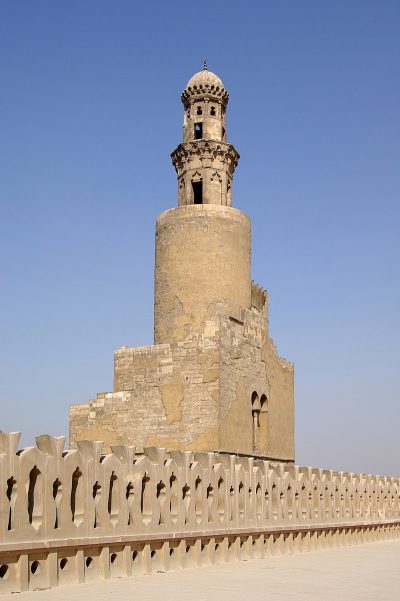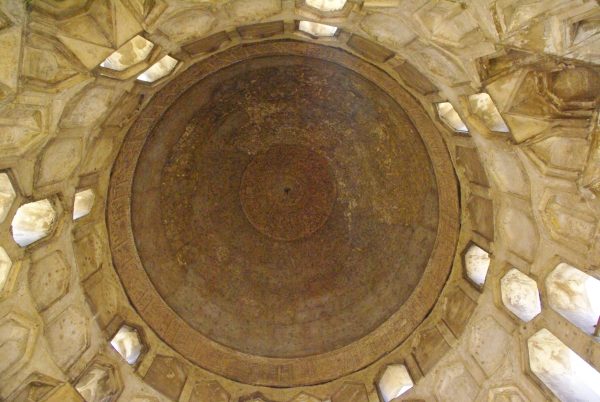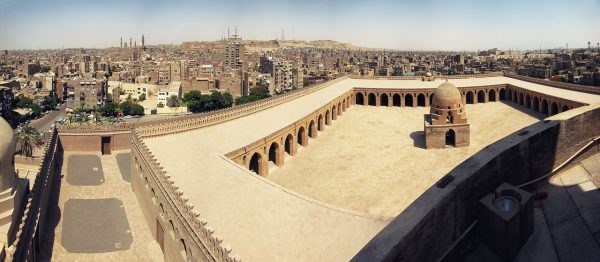Ibn Tulun Mosque, Cairo
Ibn Tulun Mosque, Cairo
Ibn Tulun Mosque, Cairo
-
Hannah
-
Hannah

The mosque was built by Ahmad ibn Tulun, founder of the Tulunid dynasty, which ruled Egypt and Syria in the ninth century. Ibn Tulun wanted to create a new capital city, Al-Qata’i, and he commissioned a beautiful mosque to serve as the heart of this city.
The Mosque was designed by architect Saiid Ibn Kateb Al-Farghany. It is situated on the Hill of Thanksgiving, so-called because according to legend this was the resting place of Noah’s Ark following the Great Flood. Adjacent to the mosque was the palace of Ibn Tulun, Dar al-Imara, and Ibn Tulun could enter the sanctuary through a door by the minbar.
The mosque is the third largest in the world at 26,318 square metres. (It was so big because it was designed to accommodate the army for prayers.) It was built of red bricks, which have since faded in the sun. Atop the walls are crenellations that look like paper dolls.
Set out in a square, the mosque features a large inner courtyard called a sahn, offering both sun and shade with the covered porticoes. On each side is a covered hall, the largest orientated towards Mecca, and in the middle is a fountain.
The minaret on the mosque is striking for its wraparound exterior spiral staircase. It is believed to have been inspired by the Lighthouse of Alexandria and the Great Mosque of Samarra in modern-day Iraq. The views over the sahn and the city are well worth the steep climb.

The minaret
At one point, the mosque could be accessed through no fewer than 42 doors. Ibn Tulun had built the exterior walls to keep the mosque separate to the city, but some wealthy people built houses on the walls and knocked through doors for private access.
Inside, wonderful natural light is afforded by small arched windows set into the walls. The ceiling is made of sycamore wood.

Ceiling
Along with a wooden minbar (the pulpit where the imam delivers sermons), there are six prayer niches, called mihrabs, in the walls. These indicate the direction of Mecca for orientation during prayer.
In the 10th century, the city of Al-Qata’I was destroyed, but the mosque was spared. It and its environs were absorbed into the new city of Cairo.
The mosque’s legacy has been influential, not only in Egypt but abroad. It was an inspiration for European architecture: aspects like pointed arches, piers to carry roofs rather than columns, and battlements on the walls fed into Gothic architecture, which evolved centuries later into Renaissance architecture.

View from the minaret
Today, the mosque stands as a key example of Muslim architecture, and a serene and holy place.
Photo credit: 1) Mr_Karesuando/Shutterstock.com; 2) Berthold Werner, source; 3) WLU (t) (c); source; 4) Ahmedalbadawy, source.